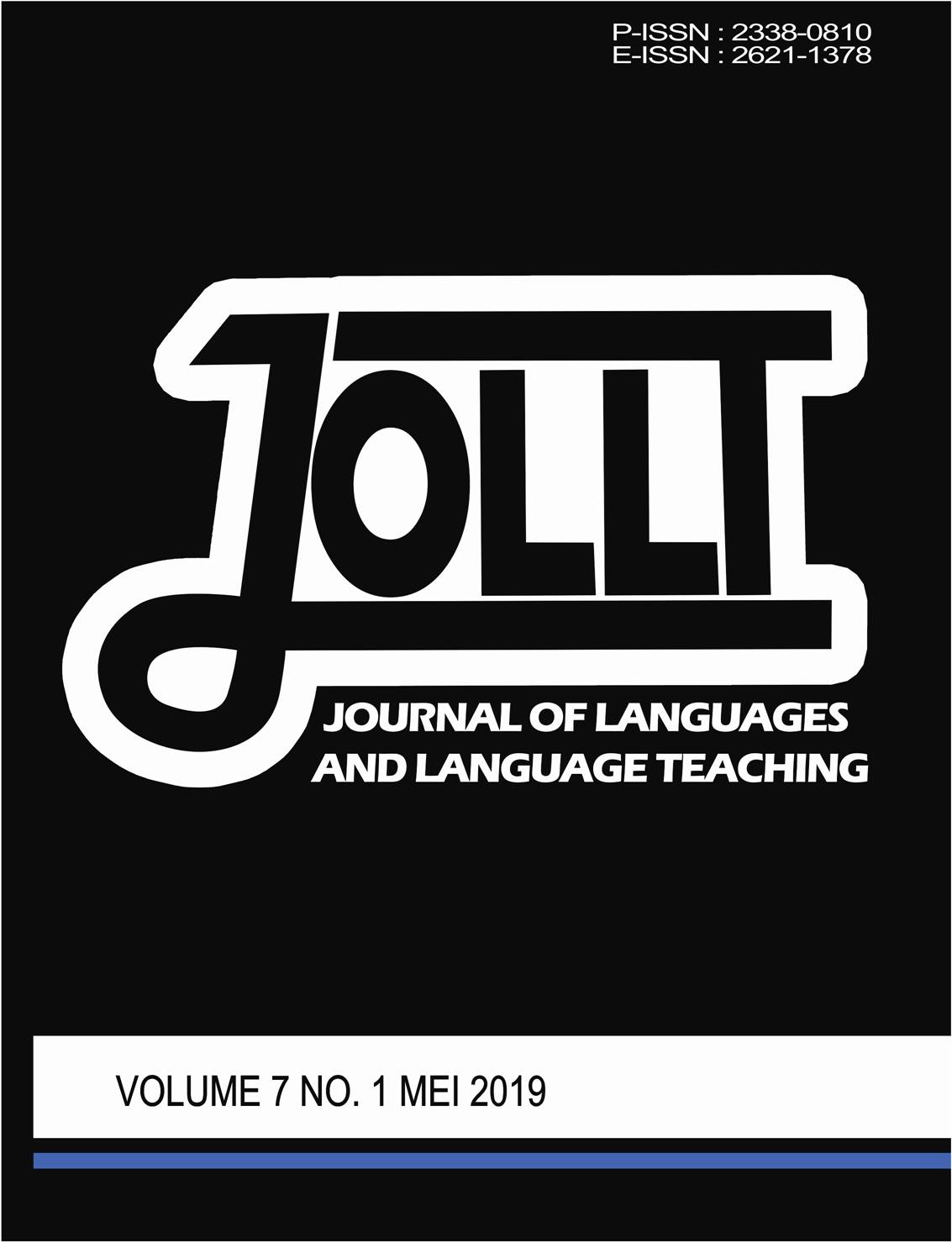THE EFFECT OF USING CONSTRASTIVE METHOD IN TEACHING ENGLISH NOUN PHRASES
DOI:
https://doi.org/10.33394/jollt.v7i2.1959Keywords:
Contrastive, contrastive method, method, noun phrases, students’perceptionAbstract
References
Anita. (2016). The developmental pattern of the acquisition of English Noun Phrase by University Students Majoring English Language Education (Thesis).Yogyakarta: Sanata Darma University.
Ayuningsih, D. M. (2007). Noun Phrase Construction Found In Report Genres In The First Year Senior High School Students’ Textbooks (Thesis). Semarang. English Department Languages and Arts Faculty at Semarang State University.
British Council, (2019). Noun Phrase.Retrieved February 04, 2019 from British council.com. https://learnenglish.britishcouncil.org/english-grammar/noun-phrase.
Ediati, Nurkamto, J. & Sumardi (2016). Improving Students’ Competence in Constructing English Noun Phrases through Round Table Technique.
Fisiak, J. (1981). Contrastive Linguistics and The Language Teacher. New York: Pergamon.
Ivone, F. M. (2005). Teaching English as A Foreign Language in Indonesia: The Urge to Improve Classroom Vocabulary Instruction.TEFLIN Journal.Vol 2. No.2. hal 196.
Haerazi, H., & Irawan, L. A. (2019). Practicing Genre-Based Language Teaching Model to Improve Students’ Achievement of Writing Skills. IJELTAL (Indonesian Journal of English Language Teaching and Applied Linguistics), 4(1), 9-18. http://dx.doi.org/10.21093/ijeltal.v4i1.246
Lamatokan, A (2018). Students’ Perception toward Teachers’ Teaching Styles and The Use of Learning Strategies in Teaching English. Eralingua: Jurnal Pendidikan Bahasa Asing dan Sastra. Vol 2.
Legge, E. S. (1971). An Outline of Clause and Phrase Structure in Bahasa Indonesia (Thesis). Australia: Australian National University
Loewen, G. (2011). The Syntactic Structure of Noun Phrases in Indonesian (Thesis). Department of Linguistics University of Manitoba Winnipeg.
Mastering Bahasa, (Oct 23, 2017). Types of Indonesian Noun Phrase Structure with Examples. Retrieved February 04, 2019 from masteringbahasa.com https://masteringbahasa.com/indonesian-noun-phrase-structure.
Merdana. (2015). Contrastive Analysis On Syntactical Construction of Sasak Language and English. Journal Ilmiah Rinjani_Universitas Gunung Rinjani. Vol 2.
Miller, J. (2002). An Introduction of English Syntax. Great Britain: MPG Books Ltd, Bodmin.
Simmons, R. L. (2014). The Phrase. Retrieved February 01, 2019 from chompchomp.com: http://www.chompchomp.com/terms/phrase.pdf.
RodrÃguez-navarro, L.Q. (1984). Verb Phrases and Noun Phrases in English: A Parallel Approach. Granada: University of Granada.
Shuttleworth, M. (Nov 3, 2009). Pretest-Posttest Designs. Retrieved February 04, 2019 from Explorable.com: https://explorable.com/pretest-posttest-designs.
Sneddon, J. N. (2000). Understanding Indonesian Grammar: A Student’s Reference and Workbook. Australia: Allen & Unwin.
Tandian, S. T. (2015). Contrastive Analysis of Using Noun Phrase in English and Indonesian Language. Jurnal Siliwangi. 1 (1): 2476-9312
Tarigan, H. G. (2009). Pengajaran Analisis Kontrastif Bahasa. Bandung: Percetakan Ankasa.
Ukessays, (2003). Definition and the Five Stages of Perception. Retrieved February 04, 2019 from ukessays.comhttps://www.ukessays.com/essays/psychology/definition-and-the-five-stages-of-perception-psychology-essay.php.
Ulfa, F. (2018). Teaching vocabulary using cartoon movie. JOLLT Journal of Languages and Language Teaching, 5(1), 23-27. https://doi.org/10.33394/jollt.v5i1.330
Yuwono, S. E. (2010). Contrastive Analysis of English and Indonesian Noun Phrase. Magistra. XXII No.73.
Zurri, A. (2018). The effectiveness of ransom note game in learning vocabulary. JOLLT Journal of Languages and Language Teaching, 5(1), 1-5. https://doi.org/10.33394/jollt.v5i1.326
Downloads
Published
How to Cite
Issue
Section
Citation Check
License
License and Publishing Agreement
In submitting the manuscript to the journal, the authors certify that:
- They are authorized by their co-authors to enter into these arrangements.
- The work described has not been formally published before, except in the form of an abstract or as part of a published lecture, review, thesis, or overlay journal.
- That it is not under consideration for publication elsewhere,
- That its publication has been approved by all the author(s) and by the responsible authorities – tacitly or explicitly – of the institutes where the work has been carried out.
- They secure the right to reproduce any material that has already been published or copyrighted elsewhere.
- They agree to the following license and publishing agreement.
Copyright
Authors who publish with JOLLT Journal of Languages and Language Teaching agree to the following terms:
- Authors retain copyright and grant the journal right of first publication with the work simultaneously licensed under a Creative Commons Attribution License (CC BY-SA 4.0) that allows others to share the work with an acknowledgment of the work's authorship and initial publication in this journal.Â
- Authors are able to enter into separate, additional contractual arrangements for the non-exclusive distribution of the journal's published version of the work (e.g., post it to an institutional repository or publish it in a book), with an acknowledgment of its initial publication in this journal.
- Authors are permitted and encouraged to post their work online (e.g., in institutional repositories or on their website) prior to and during the submission process, as it can lead to productive exchanges, as well as earlier and greater citation of published work.
Licensing for Data Publication
- Open Data Commons Attribution License, http://www.opendatacommons.org/licenses/by/1.0/ (default)
This work is licensed under a Creative Commons Attribution-ShareAlike 4.0 International License.

















